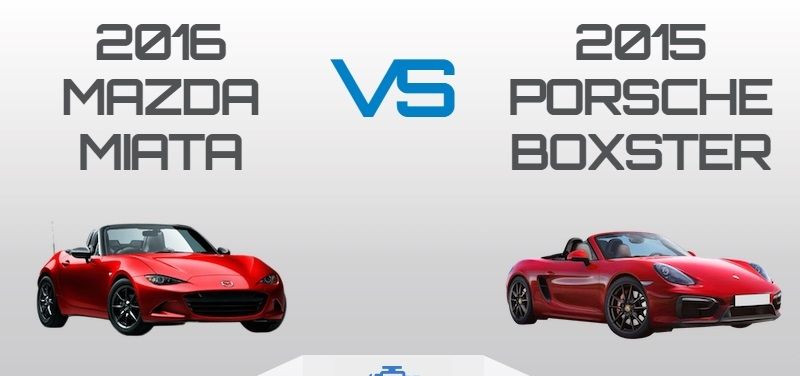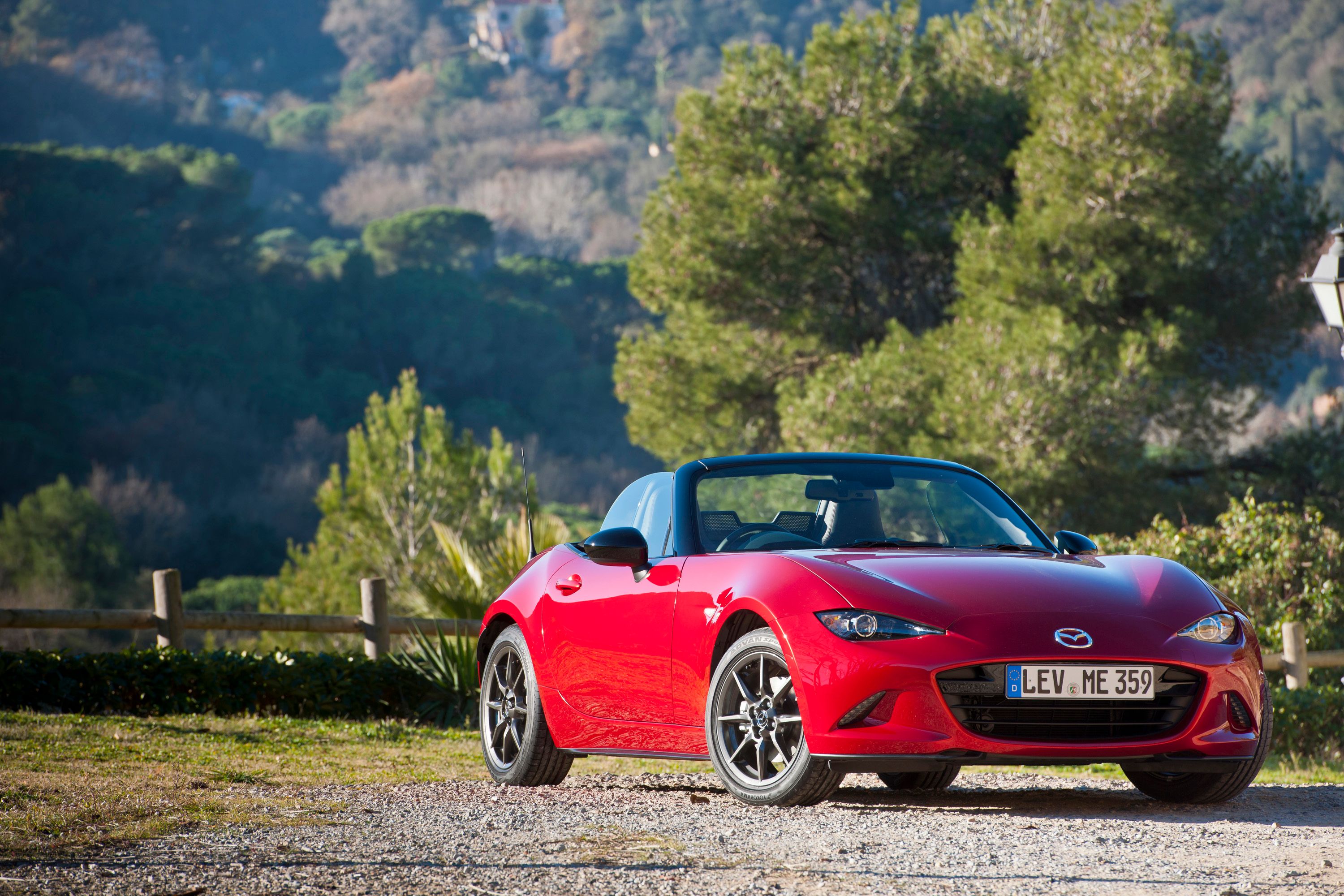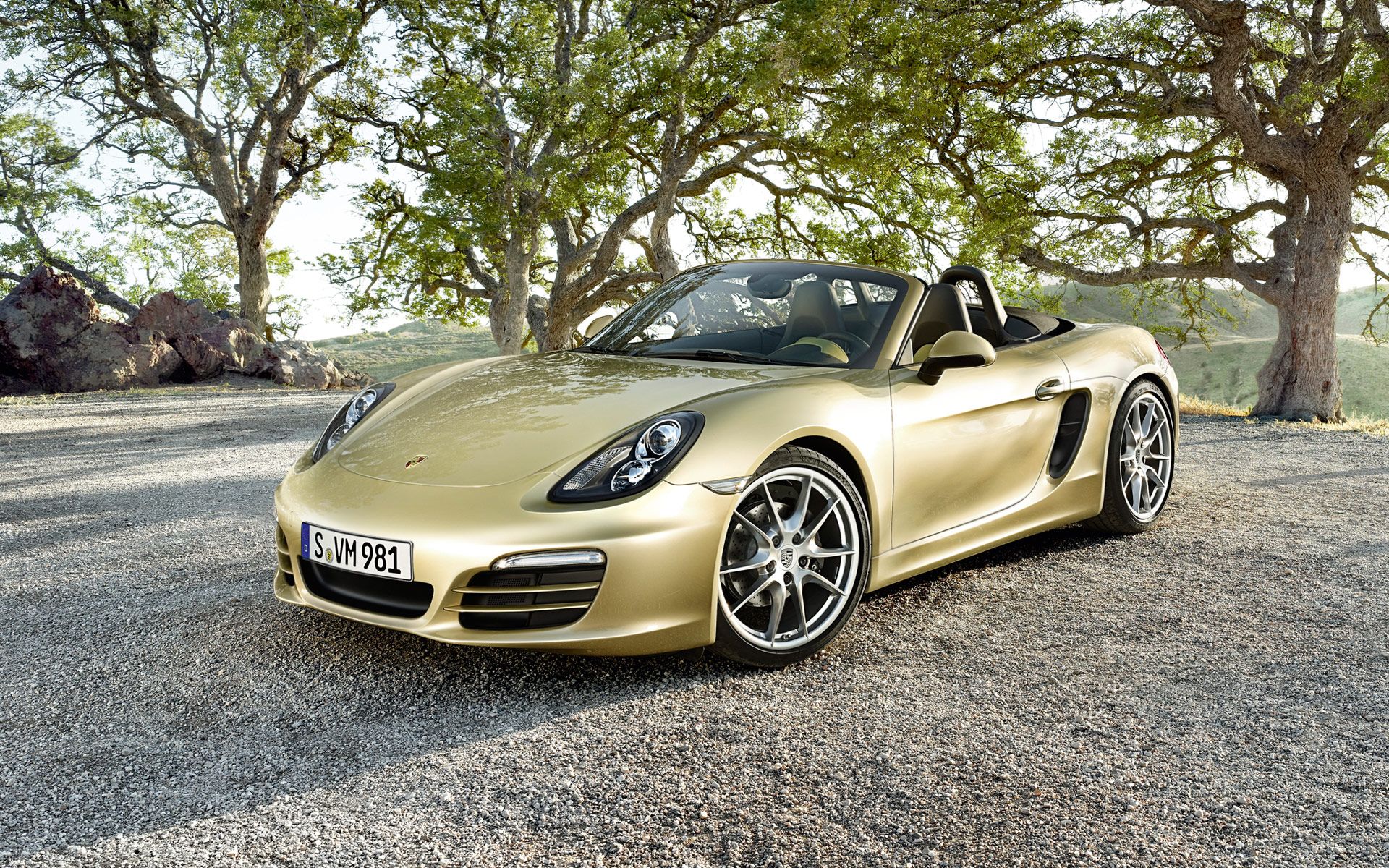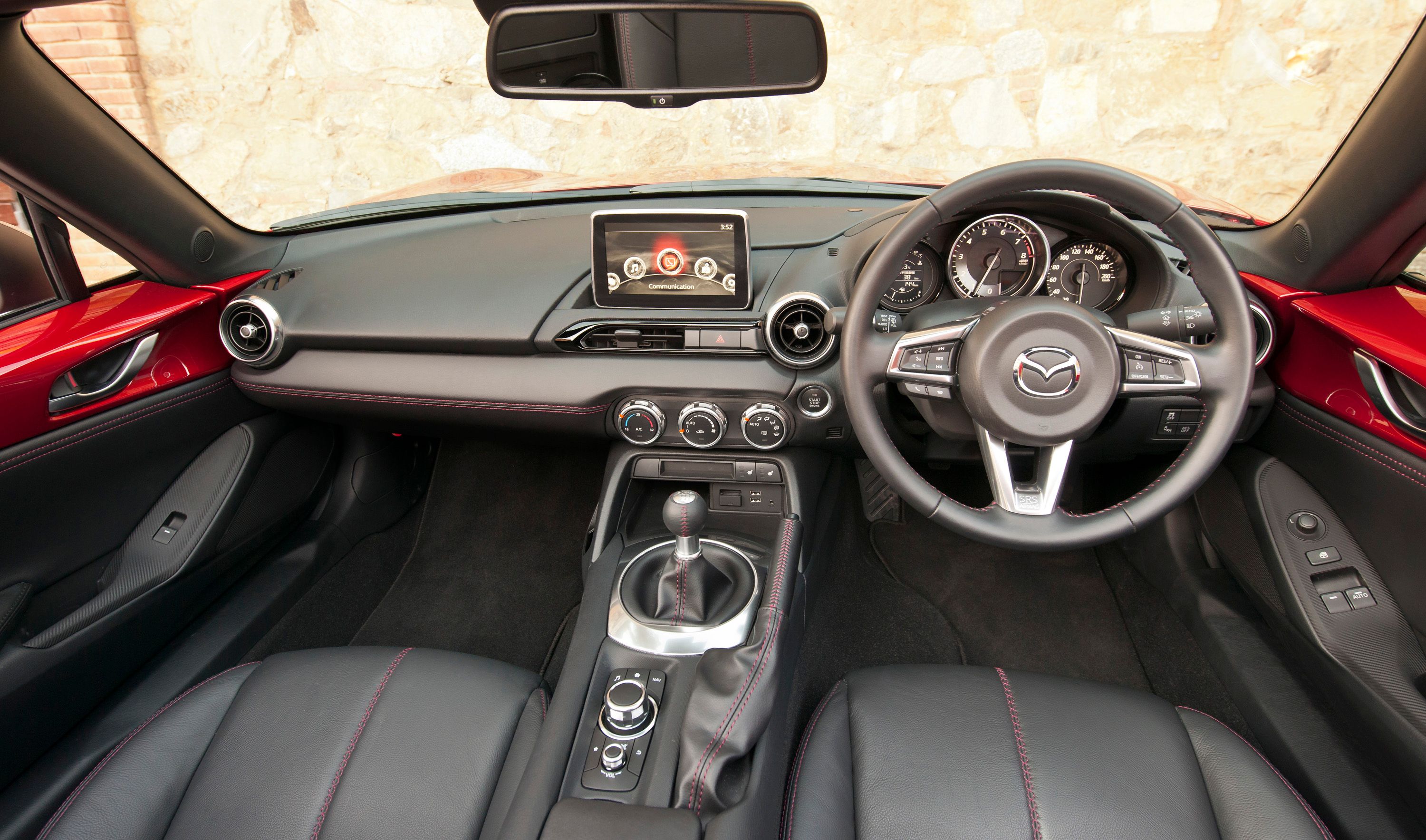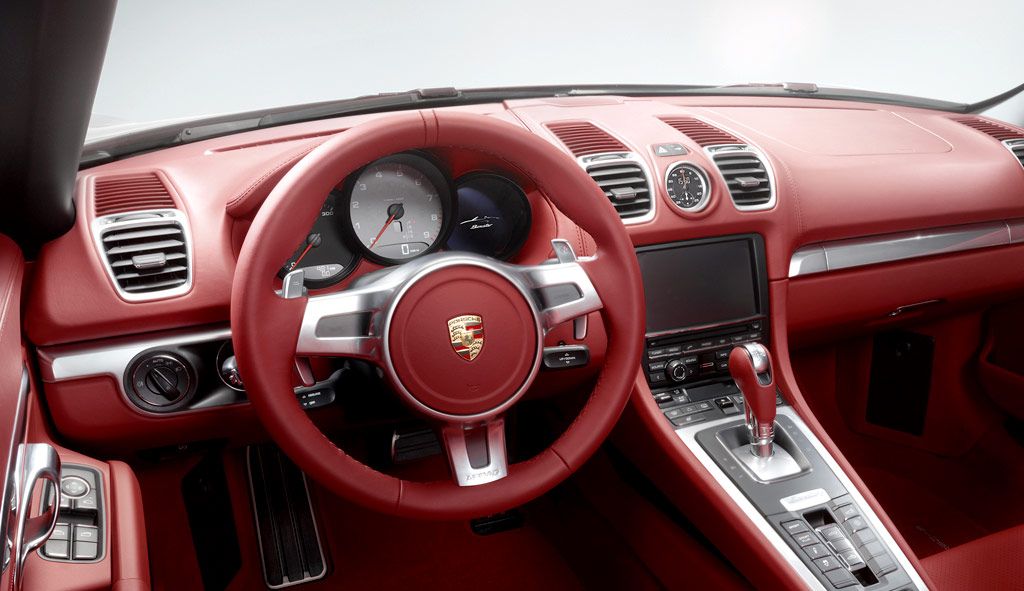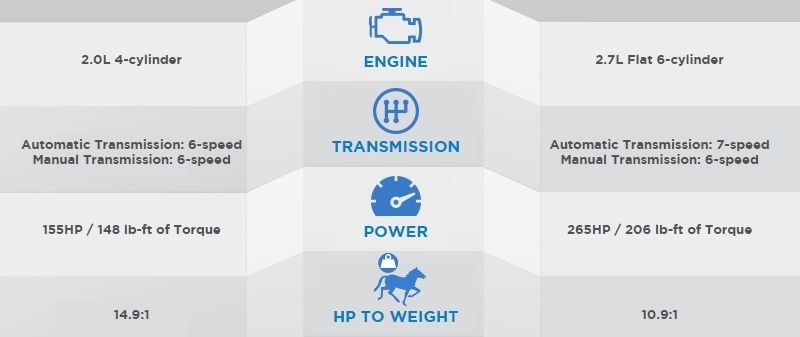In its 26 years of history until 2015, the Mazda MX-5 Miata->ke1185 saw three generations, several design updates, and numerous engine changes. Conceived as a rear-wheel-drive, compact->ke140 roadster->ke1418 that was both affordable and fun to drive, the Miata quickly became a hit with sports car->ke506 enthusiasts and one of the hottest-selling convertibles->ke144 on the market. For 2016, the Japanese roadster received an extensive overhaul inside and out, along with a new, powerful, yet still fuel-efficient engine.
The fourth-generation Miata came in a time when both the Honda S2000->ke1409 and Toyota MR2,->ke357 its traditional rivals, are no longer on the market. With both the Pontiac Solstice->ke264 and Saturn Sky->ke522 also gone -- along with the brands that sold them -- and the Mini Roadster->ke3891 discontinued as of 2015, the Miata is pretty much alone in its niche.
With no other roadster is as affordable as the MX-5, Mazda is now aiming the 2016 Mazda Miata at the 2013-2015 Porsche Boxster, which is both more expensive and significantly more powerful. In the real world, the Miata would be no match for the German. However, Mazda set out to prove that the Boxster->ke570 isn't that much better than the Miata in a comparison made by Mazda Parts USA that takes both performance and pricing into account. We decided to add our own input to this virtual test and have a look at the styling and amenities that come with each roadster as well.
Continue reading for the full story.
Exterior
The Miata has always been on the attractive side of the roadster market, but the fourth-generation car is definitely the most appealing of them all. While the previous Miata was an evolution of the NB, the new roadster sports a more modern design.
Overall, it's sleeker and significantly more aggressive, now incorporating a muscular hood and beefier fenders, as well as a massive front bumper grille, a look that has been adopted by many carmakers recently.
The frowning headlamps also contribute to its new, sportier image, as do the round, Ferrari-like->ke252 taillights.
In many ways, the Boxster too has become a lot more aggressive in recent years. Whereas the first-generation model seemed to a smaller, cartoonish version of the 911 Convertible, the current model follows a direction of its own. Sure, the bug-eye headlamps and the three-piece intake layout of the front bumper still reminds me of the 911,->ke282 but the way the side panels are sculpted toward the rear gives it a distinctive appearance.
Of course, a quick peek at the Boxster's design is enough to understand why the Porsche plays in a different league. Unlike the Miata, the Boxster has it engine behind the seats, which results in a supercar-like->ke177 appearance with a shorter front lid and a longer rear deck.
Interior
As with most redesigns, the new Miata received a more upscale interior. But not by much though, as it still comes with a rather spartan and purposeful cabin. Although the shiny and cheap-looking plastic insert running the entire length of the dashboard has been ditched for a softer piece, the instrument panel hasn't changed much.
The round A/C vents and the circular knobs are still there, while the steering wheel retained its trademark three-spoke configuration. However, there are new features that bring the Miata into the 21st century, such as the cleaner center stack, the body-colored inserts in the door panels, and sportier seats. Additionally, the new interior offers a lower seating position, giving the Miata a racier feel from behind the wheel.
The Boxster's interior is a completely different story. Initially cramped and far from fancy, the Boxster's cockpit is now the most luxurious in the segment, even when selected in base trim.
Each surface looks and feels better thanks to the use of higher quality materials, while the options list includes a huge amount of leathers and inserts, which you can't have in the Miata.
Design-wise, I'd say the Boxster's interior doesn't feel quite as modern as the Miata's. However, it comes with that classy feel you can only find in a Porsche and the resemblance with the 911's cockpit makes it that much better.
Drivetrain
For 2016, the Miata received Mazda's new 2.0-liter, four-cylinder with SkyActiv technology. Shared with other Mazda models, including the Mazda3, Mazda6, and CX-5, the four-banger replaces the previous MZR unit, also a four-banger displacing 2.0 liters. Specifically tuned for the Miata, the SkyActiv cranks out 155 horsepower and 148 pound-feet of torque (nearly identical to the Mazda3's), which are delivered at 7,000 and 4,800 rpm, respectively. Transmission choices include a six-speed manual, offered as standard, and an optional six-speed automatic.
The 2015 Boxster can be had with more than just one engine, but for this comparison we will focus on the entry-level model. The base roadster comes with a 2.7-liter flat-six rated at 265 horsepower at 6,700 and 206 pound-feet of torque, which is significantly more than the Miata. Customers can also choose from two transmissions, a six-speed manual with dual-mass flywheel and self-adjusting clutch, and the seven-speed PDK. Options include Porsche Torque Vectoring and the Sport Chrono Package.
Performance
Although the 155 horses and 148 pound-feet coming from the 2.0-liter four-pot might not seem like much, the Miata is quite quick from 0 to 60 mph, needing only 5.9 seconds to cover the distance.
Also, it will run the quarter-mile in 14.6 seconds at 95 mph. How's that possible? Well, the Miata tips the scale at only 2,313 pounds, which makes it lighter that just about any similar roadster out there. The Miata's fuel economy is also impressive, estimates indicating 34 mpg on the highway and 27 mpg in the city.
With more power at its disposal, the Boxster is significantly quicker than the Miata, even though it's more than 500 pounds heavier at 2,888 pounds. The sprint from 0 to 60 comes in 5.5 seconds with the manual transmission and in 5.4 ticks with the PDK. Adding the Sport Chrono Package shaves two tenths of a second off the PDK's sprint, taking it down to 5.2 seconds.
Likewise, the Boxster takes only 14 seconds to complete the quarter-mile at 103 mph. Top speed sits at 164 mph with the manual gearbox and 162 mph with the PDK The German roadster wins in the braking department as well, coming to a complete halt from 70 mph in 145 feet (compared to the Miata's 158 feet).
As far as fuel economy goes, however, the Boxster comes in second, returning 30 mpg highway and 20 mpg city. But that's far from surprising given the performance figures above and not bad for a sports car this capable.
Prices
The original Miata was developed as an affordable sports car, and thankfully that has remained unchanged to this day. The four-generation roadster starts from $24,915, including delivery. Only $2K more expensive than a 2015 Toyota Camry, the 2016 Miata is the kind of sports car that the average Joe can afford. The Boxster, on the other hand, comes in at $52,395 including delivery, but before options, a sticker that puts it on par with several luxury sedans and SUVs. According to Mazda's infographic, the Miata requires $161 per horsepower, while the Boxster fetches $198 per horsepower.
Conclusion
Mazda's Conclusion
In Mazda's own words, this comparison was made to show the "shocking degree of similarity" between the new Miata and the base 2015 Boxster. Though the Japanese brand acknowledges that the Miata is no match for the Boxster in most departments, it uses the comparison to point out that the Miata offers about 90 percent of the performance of a 2015 Boxster at less than 50 percent of the price. All told, Mazda's take on this comparison is fair and open-minded. Instead of trying to highlight only the aspects in which the Miata bests the Boxster, like most automakers do nowadays, the Japanese admit that the Porsche is superior in terms of performance while stressing that the MX-5 is more affordable and delivers a great deal of fun for the buck.
The TopSpeed Conclusion
My only rant with Mazda's conclusion is that the brand brags maybe a bit too much about the Miata's sticker. Indeed, the Miata costs less than half the price of an entry-level Boxster, but it feels as if Mazda is taking into account pricing and performance only. Problem is you can't compare these cars in two areas only. The Boxster and the Miata may be a couple of compact performance roadsters, but they are built for distinct crowds and are actually very different. At the end of the day, we are looking at two sports cars with different purposes, drivetrain layouts, and base stickers and the verdict pretty much depends on what you want, and, more importantly, what you can afford.
The Miata is just perfect if you're buying your first sports car and you're on a limited budged. However, when money is not an issue, I bet most enthusiasts would rather go for the Boxster. Why? Well, isn't it obvious? It performs better, it comes with a lot of race-bred technology, and it's a Porsche! Simply put, sports car enthusiasts would never cross-shop a Miata and a Boxster, just like supercar buyers won't cross-shop a 2016 Ferrari 488 GTB and a 2015 Chevrolet Corvette Z06. Different strokes for different folks.

